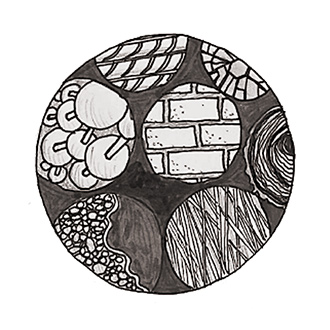
Related Questions
- Why is mercury liquid at room temperature?
- Are there materials that can absorb heat without becoming hot?
- How does glass change over time?
- Why does structural behavior change in different types of soil?
- Can we safely burn used plastic objects in a domestic fireplace?
- Why doesn’t a plain, white piece of paper reflect light, but a mirror does?
- How can a snail crawl upside-down on the underside of the surface of a pond?
- What makes wood rot so slowly?
- Does hot water freeze faster than cold water?
- Is fire a solid, a liquid, or a gas?
Does a golf ball really change its shape when struck by the club?
Thanks to Doc Edgerton, Tiger Woods can really see what Bobby Jones couldn’t even imagine…
By Lori BakerYes, according to Kim Vandiver, professor of mechanical and ocean engineering and director of MIT’s Edgerton Center. In fact, the next time you take a swing, imagine your golf ball in the shape of a pancake. At the moment of its impact with the club face, a golf ball compresses dramatically under the high-impact force of the club. It squeezes down, then pushes itself off the club, while simultaneously being pushed by it — resulting, hopefully, in a graceful, 300-yard arc into to the middle of the fairway.
“The ball starts out at zero speed.” Vandiver says, “When it’s hit, it goes from being at rest to moving more than 100 mph in a very short period. The impact of the club on the ball is substantial. Any object that’s not perfectly rigid, when struck with that kind of force, will deform. What the human eye doesn’t realize,” he adds, “is that the ball is in contact with the face of the club for a finite amount of time.”
This moment of contact, too rapid to be observed (except maybe on the putting green), was first captured on film through a process of high-speed photography developed in the 1930s by MIT’s Harold “Doc” Edgerton. Edgerton pioneered the techniques and equipment used in multiple-flash exposures taken at hundredths of a second to photograph the moment of impact at which the ball is literally flattened against the club before it springs back and away. Vandiver notes that Edgerton developed and used a number of high-speed photographic techniques — including strobe lighting, time-lapse, and shadow photography — to make other normally-invisible processes visible to the human eye. Edgterton’s still images of bullets caught in mid-flight through a playing card and an apple are iconic, as are his short films showing the flow of individual water droplets or the beating wings of hummingbirds.
Edgerton’s techniques were not developed solely for aesthetic purposes, Vandiver points out — Doc was acutely interested in solving problems in industry. For example, he photographed the movement of a shuttlecock in a loom, slowing it so that the jamming of thread on the spool could be isolated and corrected. “He also photographed lathes and the rotation of fan blades — vibrations of all kinds in equipment — so he could make it much easier to understand these types of repetitive events.” Vandiver notes that much of Edgerton’s remarkable work — photographs of athletes, milk droplets, golf balls being struck by the club, and the first-ever shots of atomic bomb blasts — are available online as part of the Edgerton Digital Collections.
Those who are interested in improving their golf swing should go have a look, Vandiver adds. “Some of the photos also show what happens when an iron doesn’t hit the ball squarely,” he says. It isn’t a pretty sight.
Posted: June 14, 2011